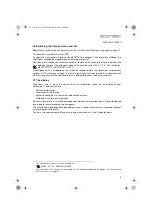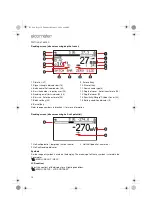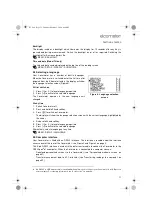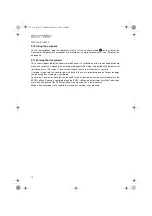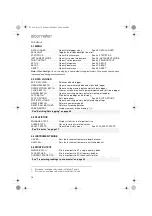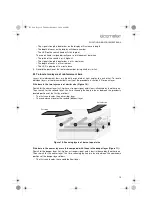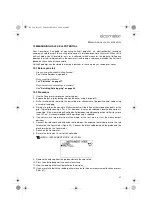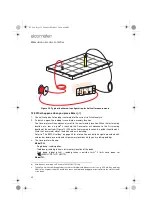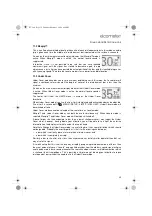
22
M
EASURING
DEPTH
OF
COVER
R
6 MEASURING DEPTH OF COVER
This section describes how to set up and use your Covermeter to measure the depth of cover over
reinforcement bars.
6.1 Before you start
•
Are you using the correct search head?
See “Search heads” on page 55.
•
Do you require statistics?
See
•
Do you want to save readings in memory?
See
“Batching/Data logging” on page 40
.
•
What units of measurement do you want to use?
6.2 Procedure
1. Connect the search head to the Covermeter.
2. Switch on the Covermeter.
3. Ensure the instrument is set to Cover mode.
MENU / INSTRUMENT MODE / COVER
4. Select bar diameter - see “Selecting bar size” on page 25.
5. Zero the Covermeter.
6. Set sound mode to ‘locate’ -
MENU / SETUP / SOUND MODE / LOCATE
q
.
7. Adjust sensitivity - see “Adjusting sensitivity” on page 34.
8. Locate the reinforcement bar using the sound, the LED and the display as indicators.
The reading of cover is continuously updated on the display in large digits. If AutoSize is
switched on (
MENU / SETUP / DISPLAY / SHOW AUTOSIZE INFO), smaller bracketed
readings show the estimate of the bar size (autosize) and the corresponding depth of cover. If
the autosize calculation cannot be performed because the signal is too small (cover too great),
the autosize and autosize depth of cover readings are blanked (the display shows ‘--’).
9. Compare the bar diameter with the autosize bar diameter. If the two numbers are significantly
different, stop depth of cover measurement and measure the bar size using the Orthogonal
method - see “Measuring size of reinforcement bars (orthogonal)” on page 27.
q.
Although Locate Mode is specified here, other Sound/Detection modes are available - see “Sound mode/
Detection mode” on page 33 for further details.
331.book Page 22 Thursday, March 12, 2009 9:46 PM


